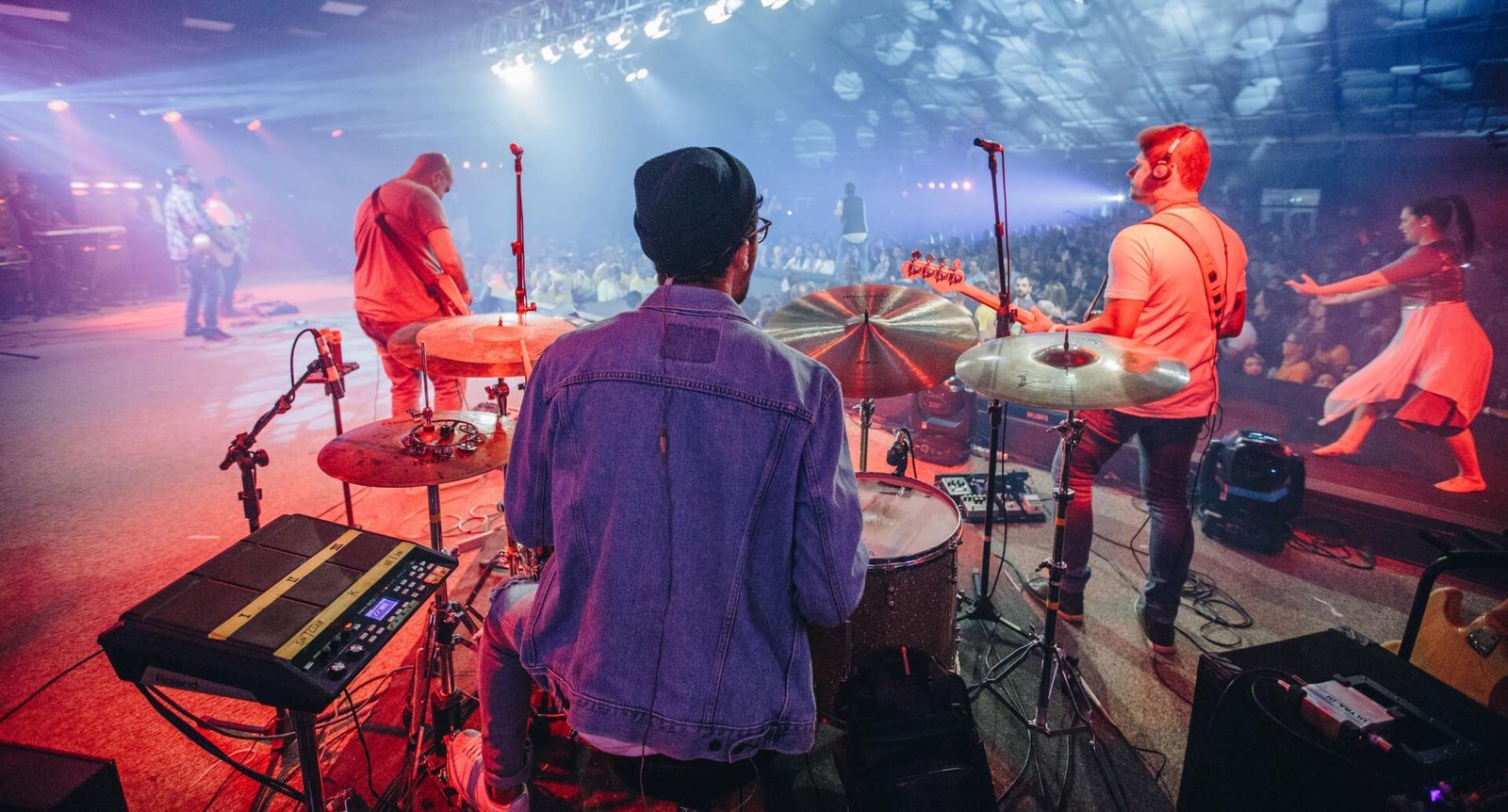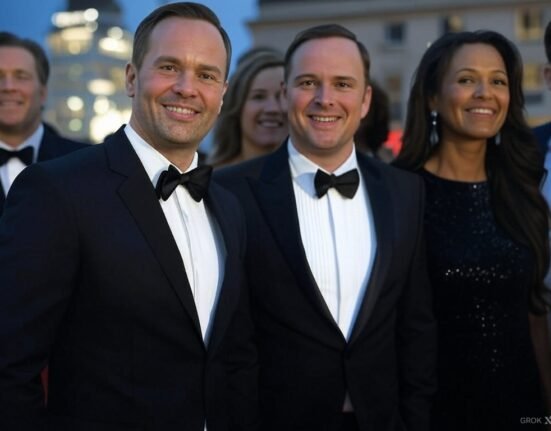The concert industry is poised for considerable transformation in 2024, shaped by various evolving trends that reflect the changing landscape of entertainment and audience engagement. A pivotal aspect influencing these trends is the accelerated integration of technology. Enhanced virtual reality (VR), augmented reality (AR), and live-streaming capabilities are not merely augmenting traditional concert experiences but are fundamentally reshaping how shows are conceived, marketed, and consumed. Audiences now expect innovative technologies that allow them to interact with performances in real-time, leading to a more immersive and engaging experience than ever before.
Simultaneously, the demographic makeup of concert attendees is undergoing a significant shift. As younger generations, such as Millennials and Gen Z, become more prominent in the audience, their preferences and behaviors are notably distinct from previous generations. These younger concert-goers prioritize authenticity, sustainability, and meaningful engagements over conventional experiences, prompting event organizers to adapt their strategies. This demographic change is also reflected in the rise of diverse musical genres and acts, which are increasingly gaining popularity at live events.
Moreover, global events, particularly the aftermath of the COVID-19 pandemic, have indelibly impacted concert attendance. As safety protocols and social distancing measures continue to evolve, both musicians and organizers are tasked with navigating new challenges and opportunities. The increased focus on health and safety, alongside the economic implications of large gatherings, has led to innovative solutions designed to reassure audiences and encourage participation in live performances. In considering these intricacies, it is essential to examine how the convergence of technological advancements, shifting audience demographics, and global events will influence concert attendance and the overall concert experience in 2024, setting a compelling stage for further exploration of these trends.
Record-Breaking Attendance Figures
The concert landscape in 2024 witnessed unprecedented attendance figures, showcasing a significant resurgence in live music events following the challenges posed by the global pandemic in previous years. Major festivals and concerts reported record-breaking crowds, reflecting a burgeoning appetite for live performances among music enthusiasts. According to data compiled from various industry sources, the top events of the year attracted thousands, with some concerts claiming attendance numbers that surpassed previous records.
One of the most notable events was the “Summer of Sound” festival, which captivated audiences with an outstanding lineup. Featuring prominent artists like Taylor Swift and Ed Sheeran, the festival drew over 500,000 attendees across its multiple days, setting a new benchmark for festival attendance and revolutionizing the metrics of success within the industry. Comparatively, attendance figures from 2022 and 2023 showed slower recoveries, marking a significant year-on-year growth of approximately 40% in attendance.
Additionally, individual concert events have also seen impressive turnout, especially for leading figures in the music industry. The “Electric Beats” tour, featuring established performers like Dua Lipa and Billie Eilish, showcased sold-out venues worldwide, with several cities experiencing heightened demand. Ticket sales surged, resulting in additional dates for several locations due to overwhelming interest. This trend illustrates a lean towards large-scale events, where fans are eager to experience live music in social settings once more.
The impact of these attendance numbers extends beyond just gathering crowds; they signify a revitalized interest in the concert industry, influencing future investments, promotions, and artist engagements. As attendance figures continue to rise, concert promoters and venues are now presented with opportunities for strategic growth and development in the coming years. The reverberations of these record-breaking figures are sure to shape the music industry’s future direction.
The Emergence of Hybrid Concerts
In recent years, the concert industry has experienced a transformative shift with the introduction of hybrid concerts—events that seamlessly integrate both in-person and virtual attendance. This innovative approach gained traction, particularly in 2024, as artists and venues sought to accommodate the changing preferences of audiences following the pandemic. Hybrid concerts not only broaden the reach of performances but also enhance the overall concert-going experience.
One of the significant advantages of hybrid concerts is their ability to attract a wider audience. Individuals who may have been unable to travel due to geographical constraints, health concerns, or financial limitations can now participate from the comfort of their own homes. For instance, major artists have successfully hosted hybrid concerts, allowing fans from across the globe to enjoy live performances in real-time. Such accessibility helps nurture a stronger, more inclusive community around the artist and their music.
However, challenges accompany this innovative model. Technological reliability is paramount for hybrid concerts to run smoothly, as disruptions in streaming quality can detract from the viewing experience. Additionally, organizers must ensure that the in-person atmosphere remains vibrant while accommodating virtual attendees. Striking the right balance between the two experiences can be complex and demands meticulous planning.
Successful examples of hybrid concerts in 2024 include major festivals that expanded their traditional models to incorporate online components. These initiatives have received acclaim for their innovative formatting and engaged diverse audiences, demonstrating the model’s viability. The hybrid approach has undoubtedly reshaped the landscape of live music, showcasing a commitment to catering to diverse preferences while exploring new revenue avenues. As the industry evolves, hybrid concerts appear to be a significant advancement in the way people experience live music.
Diversity in Genres: A Changing Tune
The concert landscape in 2024 is poised to reflect a significant shift in musical diversity, with an expansive array of genres gaining prominence in live performances. The rise of K-pop has undoubtedly redefined global music dynamics, cementing its place in festival line-ups and concert tours. Major acts such as BTS and BLACKPINK continue to attract vast audiences, sparking an interest in the genre that transcends traditional cultural boundaries. Their vibrant performances and dedicated fanbase have influenced several festivals worldwide to include more K-pop artists, broadening their appeal and contributing to the genre’s growing influence within the concert arena.
In addition to K-pop, Electronic Dance Music (EDM) remains a dominant force in concert attendance. Renowned DJs and producers like Calvin Harris and Marshmello are consistently headlining major festivals, drawing large crowds with their electrifying sets. The integration of advanced technology and immersive experiences during EDM concerts enhances audience engagement, creating an environment that is both exhilarating and memorable. These innovations play a crucial role in maintaining the genre’s popularity and ensuring it remains a staple in upcoming concert line-ups.
The indie music scene is also witnessing a resurgence in popularity, with emerging artists gaining recognition alongside established names. Festivals are increasingly catering to this demographic by featuring a mix of indie sounds, which appeals to a broad spectrum of music lovers. Artists such as Phoebe Bridgers and Tame Impala have gained significant traction, allowing indie music to secure its position within the diverse tapestry of concert offerings in 2024.
Overall, the evolving nature of concert line-ups highlights the industry’s response to shifting audience preferences. By diversifying their offerings and incorporating a multitude of genres, events are able to attract larger, more inclusive crowds, reflecting the rich and varied musical landscape that defines 2024.
Sustainability Practices in Concerts
As the music industry evolves, so does the concert landscape, particularly with the increasing emphasis on sustainability. In 2024, concert organizers are making considerable strides towards eco-friendly practices that not only enhance the concert experience but also contribute positively to the environment. Initiatives aimed at reducing waste, achieving carbon neutrality, and optimizing sustainable logistics are becoming the norm in major concerts and festivals.
One prominent trend is the implementation of waste reduction strategies. Organizers are adopting practices such as digital ticketing and cashless transactions, which significantly minimize paper usage and streamline operations. Furthermore, many events are opting for biodegradable and compostable materials for food and beverage services, thus reducing the amount of plastic waste generated. Waste management initiatives, including on-site recycling and composting stations, encourage attendees to participate in eco-friendly practices during the event.
A critical aspect of concert sustainability is achieving carbon neutrality. Concert organizers are increasingly evaluating their carbon footprints and working towards offsetting emissions through various initiatives. This includes partnering with organizations that invest in renewable energy projects and tree-planting efforts, effectively counterbalancing the environmental impact of hosting large gatherings. Many festivals are also committing to using energy-efficient technologies, such as LED lighting and solar power, which significantly lower energy consumption.
Moreover, sustainable logistics have become a vital consideration for concert organizers. By optimizing travel routes for artists and crew, and by encouraging the use of public transport for attendees, organizers are actively working to mitigate the carbon emissions linked to event logistics. In addition, partnerships with local businesses often enhance sustainability efforts, promoting local economies while reducing transportation-related footprints. Audience responses to these initiatives have been overwhelmingly positive, as many concertgoers express appreciation for the commitment to preserving the environment. These eco-friendly practices are not merely trends but essential elements of the concert experience in 2024.
Technological Innovations Enhancing Concert Experiences
As the concert landscape evolves in 2024, technological innovations have played a pivotal role in transforming the way music lovers experience live performances. Among the most notable advancements are augmented reality (AR) and virtual reality (VR), which are increasingly becoming integrated into concert experiences. These technologies provide audiences with immersive environments that enhance their connection to the performance, allowing fans to engage with their favorite artists in groundbreaking ways. For instance, AR applications can project interactive elements onto the physical venue, while VR offers the possibility to attend concerts from the comfort of one’s home, creating a unique hybrid experience that caters to a diverse audience demographic.
Furthermore, the rise of mobile applications has revolutionized concert attendance. Concert-goers can now access event information, purchase tickets, and receive real-time updates through dedicated apps. These platforms also facilitate enhanced audience engagement by incorporating features such as live polling, social sharing, and fan-to-artist communication. Through these innovations, concert attendees are not merely passive spectators; they actively participate in shaping the overall experience. The convenience and accessibility of mobile technology have made attending concerts more streamlined, allowing for greater interaction before, during, and after events.
Moreover, social media continues to be a vital tool in promoting concerts and increasing audience engagement. Artists and organizers utilize these platforms to share promotional content, behind-the-scenes glimpses, and interactive campaigns that resonate with fans. This real-time communication fosters a sense of community and excitement surrounding upcoming performances. Additionally, user-generated content on social media creates organic buzz, enhancing visibility and encouraging attendance. As technological advancements continue to shape artist-audience interactions, the future of live concerts appears brighter, innovative, and more connected than ever before.
Regional Trends in Concert Attendance
The landscape of concert attendance is shaped by a myriad of factors that vary significantly across regions. An analysis of attendance statistics from different geographical areas reveals that North America continues to lead in concert participation, thanks in part to a strong culture of live music and expansive venues. Major urban centers such as New York, Los Angeles, and Chicago consistently report high attendance numbers, driven by a diverse range of music genres, renowned artists, and well-organized festivals. Furthermore, increased disposable income and a robust entertainment industry contribute to the thriving concert scene in this region.
In contrast, certain regions face unique challenges that affect concert attendance. For instance, European countries exhibit a gradient of concert participation, with countries like Germany and the UK showing robust numbers due to their historical significance in the music industry and a rich cultural heritage. However, areas in Eastern Europe may struggle with attendance levels, hampered by economic constraints and less developed infrastructure for hosting large-scale events. These discrepancies underscore the need for a deeper understanding of local socio-economic factors that can hinder or bolster concert attendance in these areas.
Meanwhile, the Asia-Pacific region is experiencing a noteworthy surge in concert attendance, particularly in countries like Japan, South Korea, and China. This trend can be attributed to a burgeoning middle class eager to engage in live entertainment experiences as well as significant investments in music venues and technology. However, it’s essential to recognize that regional variations persist within this area, where urban areas are significantly more vibrant compared to rural counterparts. The influence of cultural practices and local music preferences also plays a critical role in shaping attendance trends, showcasing the regional diversity of concertgoers’ interests.
Ultimately, understanding these regional trends in concert attendance is vital for artists, promoters, and stakeholders within the music industry. By acknowledging the distinct socio-economic and cultural factors influencing concert participation, strategies can be tailored to enhance engagement and attendance across various regions, ensuring a holistic approach to the future of live music events.
Audience Behavior and Preferences in 2024
Understanding audience behavior and preferences is crucial for the evolution of concerts as they adapt to changing market conditions. In 2024, these insights reveal notable shifts in age demographics, spending habits, and entertainment consumption patterns that are shaping the concert landscape. Analysis shows that younger audiences, particularly those aged 18 to 34, continue to be the primary drivers of concert attendance. This group increasingly prioritizes experiences over material goods, leading to a surge in interest in live events.
Additionally, the rise of social media platforms has created new avenues for discovery and engagement, influencing ticket purchase decisions. Audiences are likely to attend concerts of artists with whom they feel a personal connection, which can be fostered through direct interactions on digital platforms. The 2024 audience is looking for experiences that transcend traditional concerts; they seek immersive events that combine music with innovative technology, art, and interactive elements.
Spending habits indicate an inclination toward value-driven choices. Concert-goers are becoming more discerning with their finances, often opting for packages that provide not just tickets, but a comprehensive experience. This may include travel, accommodation, and exclusive merchandise, allowing fans to maximize their investment. Furthermore, sustainability has emerged as a significant consideration for many attendees; consumers are more likely to support concerts that implement eco-friendly practices.
Overall, entertainment consumption patterns reflect a demand for personalization and community. Audiences are increasingly drawn to concerts that offer tailored experiences, such as curated playlists or limited-capacity shows that foster intimacy. As these trends unfold, venues and organizers would do well to adapt their strategies accordingly, ensuring they meet the evolving preferences of their audiences in 2024 and beyond.
The Future of Concerts: Predictions Beyond 2024
As we look ahead to the concert industry beyond 2024, several key factors are expected to shape the future landscape of live music performances. Viewing the current trajectory, it is likely that technological advancements will play a pivotal role in redefining the concert experience. Innovations such as virtual reality (VR) and augmented reality (AR) are anticipated to enhance audience engagement, providing immersive experiences that blur the lines between the artist and their fans. Concert-goers may enjoy interactive elements that allow them to influence live performances, thereby creating a more personalized experience.
Moreover, the increasing reliance on streaming services is set to continue, leading to a hybrid model of live and virtual concerts. This evolution will accommodate a broader audience base, enabling fans unable to attend in-person shows the option to participate via live-streaming. It is expected that for artists, this shift will not only expand their reach significantly but also influence ticket pricing strategies; a dual-pricing model may emerge, allowing for both physical attendance and virtual access.
Additionally, consumer behavior is expected to change, with an increased emphasis on sustainability and the environmental impact of events. Promoters and venues may begin to adopt greener practices, from utilization of renewable energy sources to waste reduction measures during concerts. As fans become more conscious of their carbon footprints, the demand for eco-friendly concert experiences will likely be a noteworthy trend. Enhanced transportation options, like carbon offset programs, may become integral to the concert-going experience.
In conclusion, the convergence of technology, consumer behaviors, and environmental considerations portends a vibrant future for the concert industry. By adapting to these trends, stakeholders can ensure concerts remain relevant and engaging in an ever-evolving landscape.













Leave feedback about this